Homemade Chestnut Pasta with Pork and Cabbage Recipe from Val d'Aosta.
A traditional autumn/winter dish from the Italian mountains, this homemade chestnut pasta with pork and cabbage is a delicious and easy-to make-recipe. Like similar dishes from the Italian Alps, this rustic pasta dish is hearty, filling and made with seasonal ingredients.
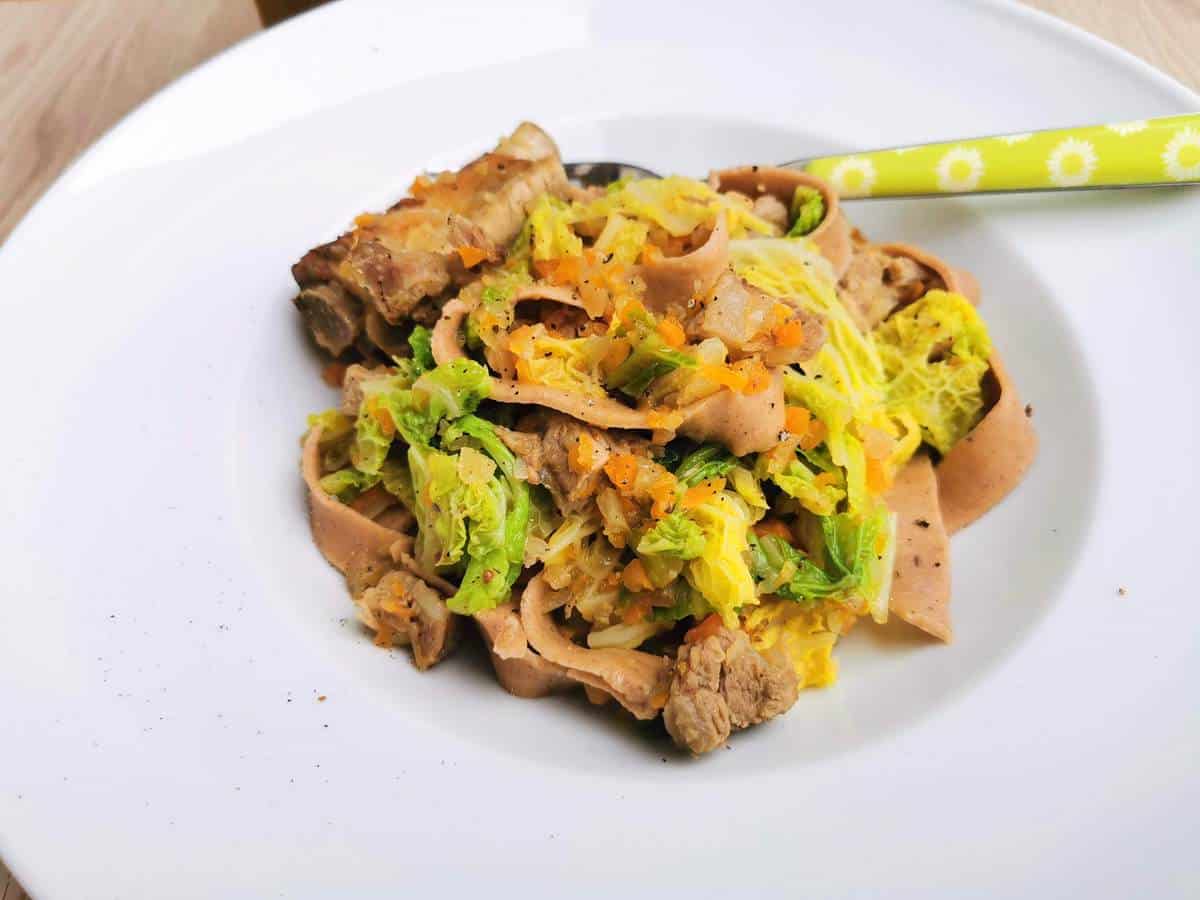
Pasta di castagne con verza e costine.
Homemade chestnut pasta with pork and cabbage comes from a beautiful mountain region in Northern Italy. The Val d’Aosta or Aosta Valley is located in the top north west corner of Italy. It borders with France and Switzerland and is the smallest and least densely populated of the Italian regions.
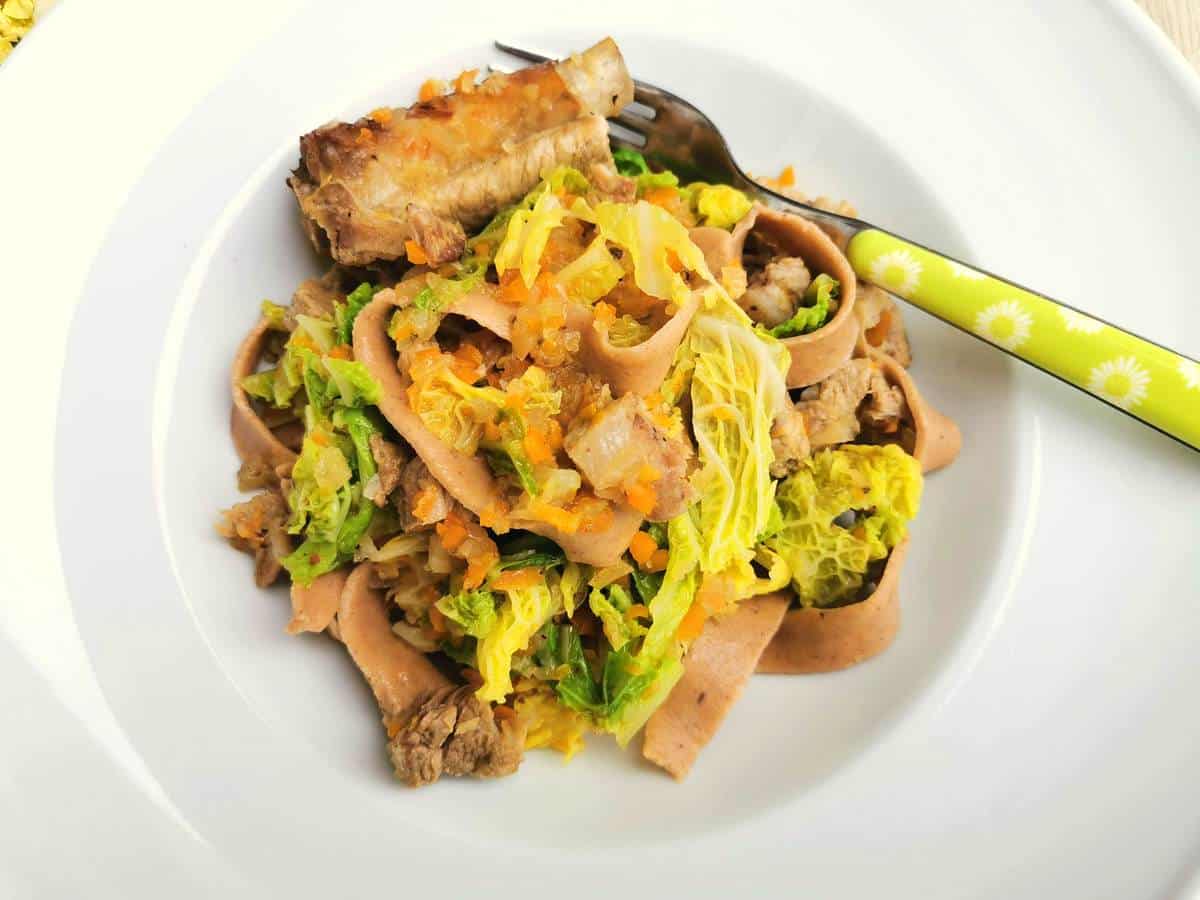
Because of the mostly mountainous terrain and colder climate, the food in the Val d’Aosta is based on hearty soups and filling meat dishes as well as their famous cheese and dairy products. You can read more about this region in my Aosta Valley post.
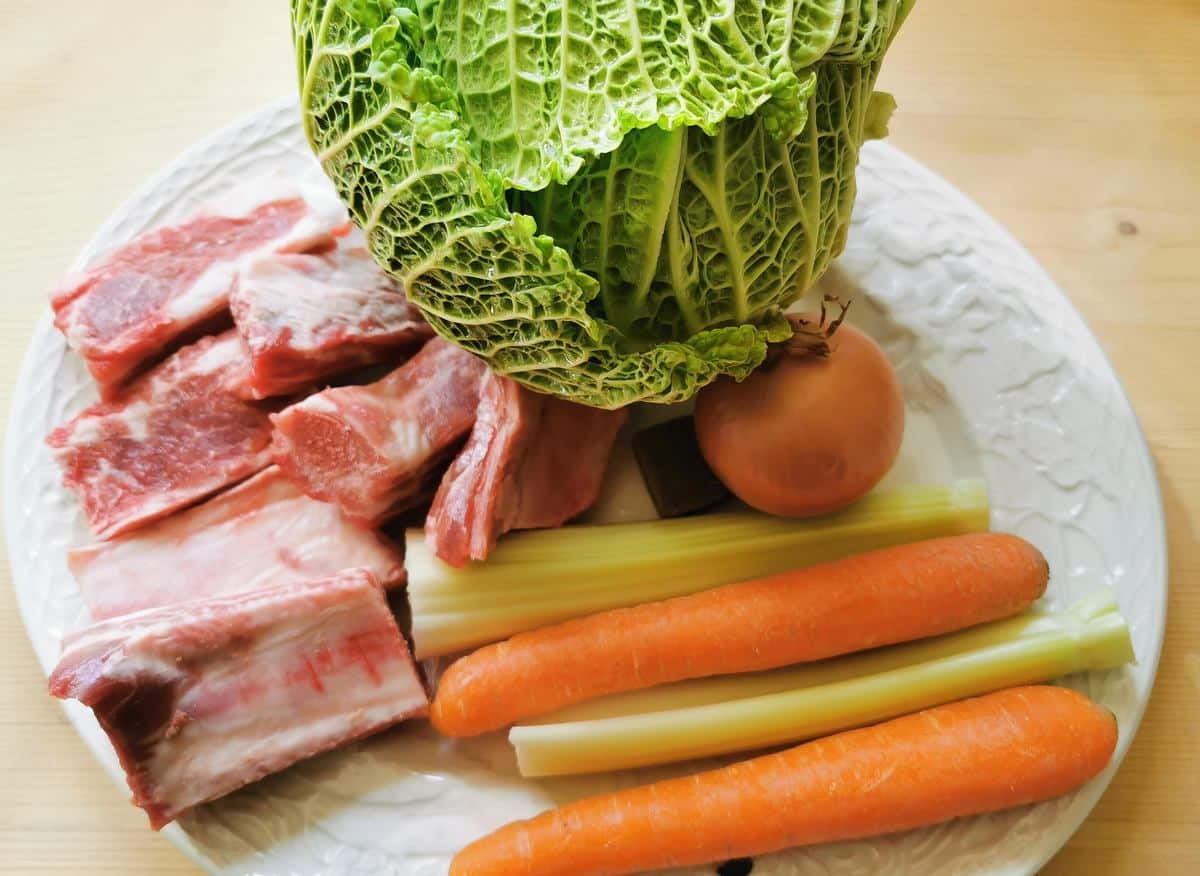
Chestnut pasta with pork and cabbage is a typical autumn/winter dish made with homemade pasta, pork ribs and Savoy cabbage. Since the pasta is homemade, this recipe takes a little longer to prepare but it’s not difficult. You can, of course, use a different pasta or buy ready-made chestnut pasta.
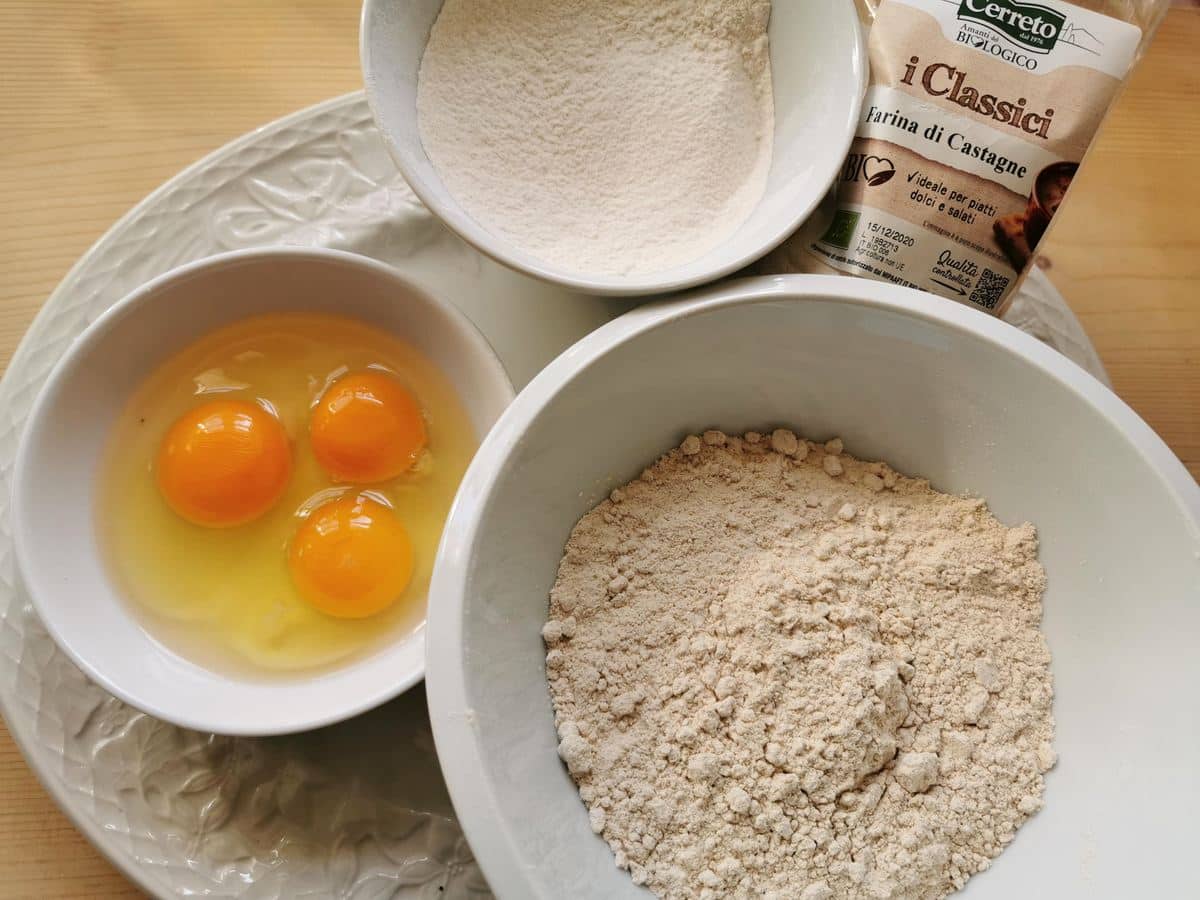
Chestnuts in the Italian kitchen.
Chestnuts are grown throughout Italy. They are picked in the autumn and it’s very common to see street vendors selling roasted chestnuts at this time of the year. In the past, chestnuts were a staple for the poor. They are rich in starches and carbohydrates and are the only nuts that contain vitamin C!
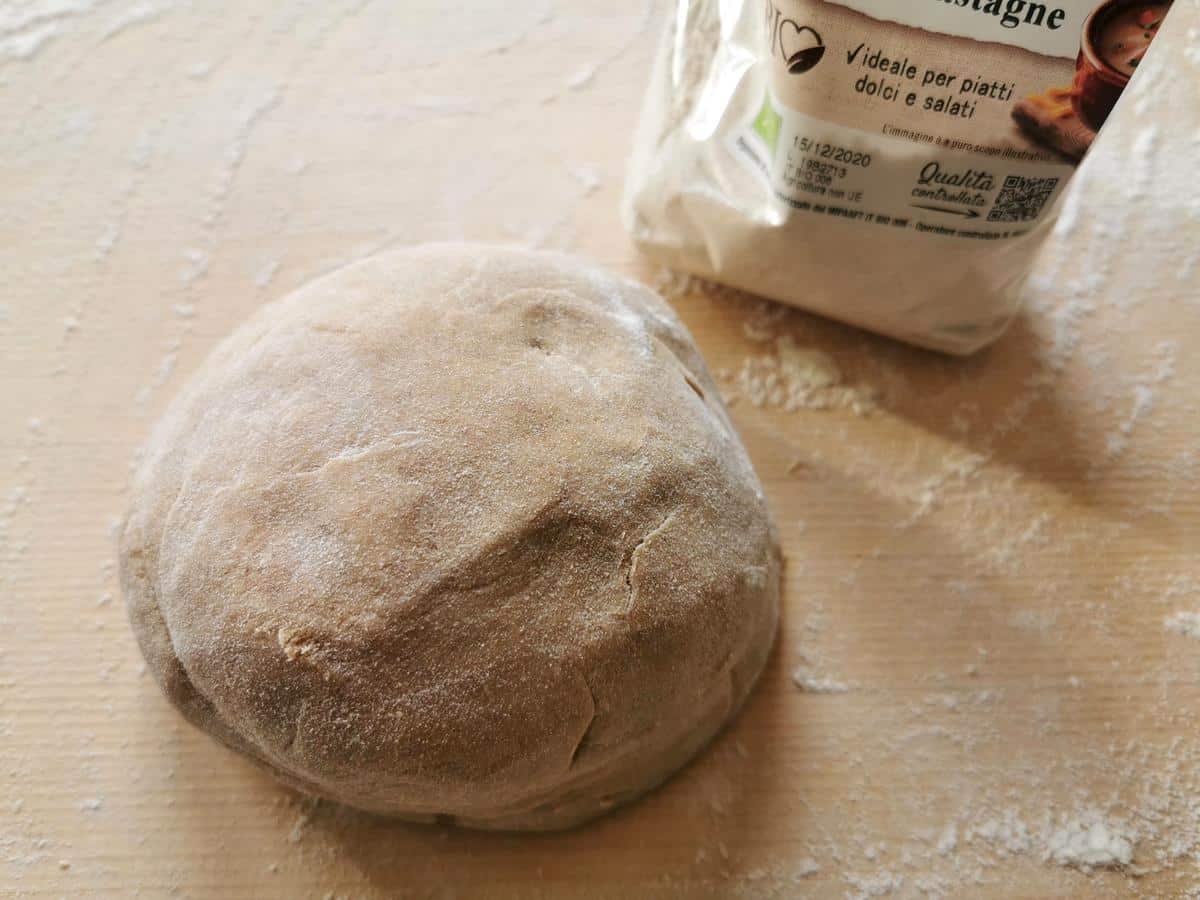
There are a lot of Italian recipes for chestnuts, including soups, risotto, meat dishes and a ton of cakes and other desserts, as well as marron glace. Chestnut flour is naturally a bit sweet and, of course, nutty! Italians have been making it for centuries! It’s gluten free and is used to make cakes, crepes, polenta, gnocchi and pasta (like this homemade chestnut pasta!)
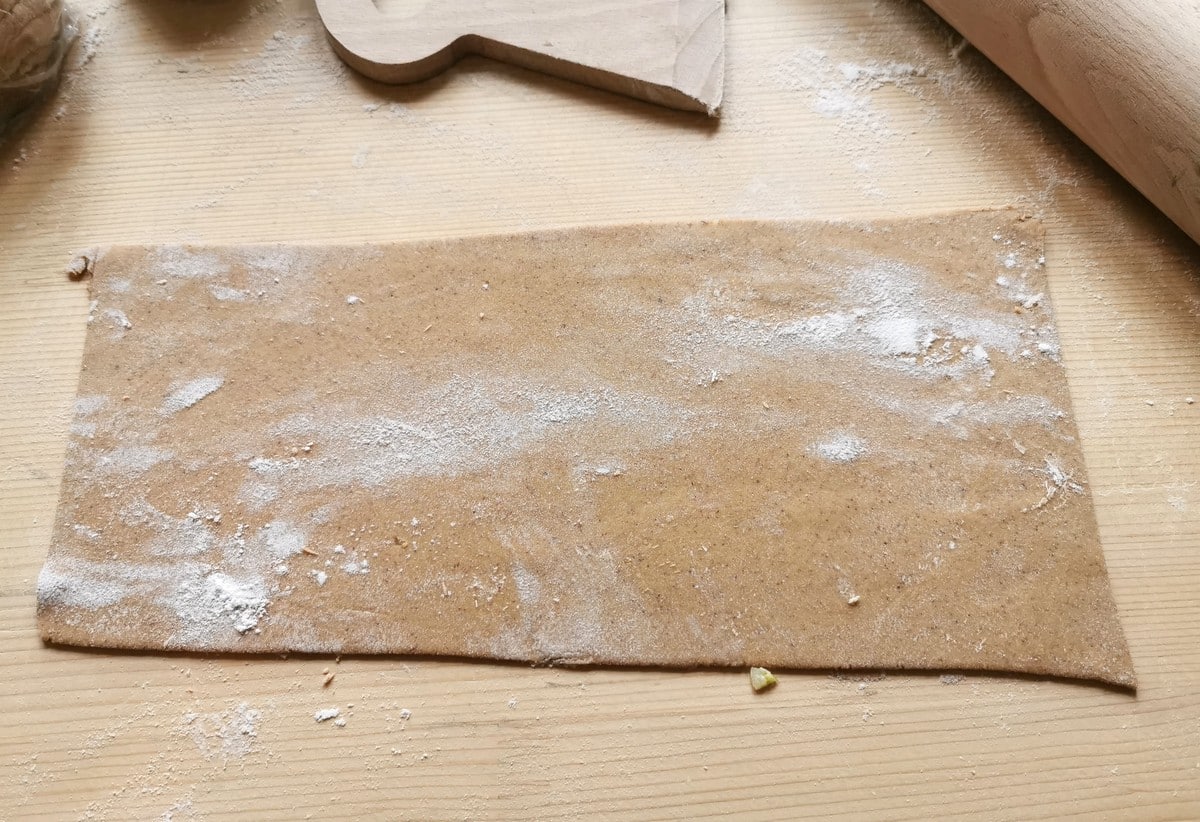
How to make chestnut pasta.
The homemade chestnut pasta in this recipe contains a mix of chestnut flour and Italian ‘00’ flour. However, you can also use all-purpose flour instead. This is an egg pasta so it contains eggs! Some traditional Italian chestnut pasta has just water instead. An example of this is ‘lasagne bastarde’ from Tuscany, which is on my to make list!
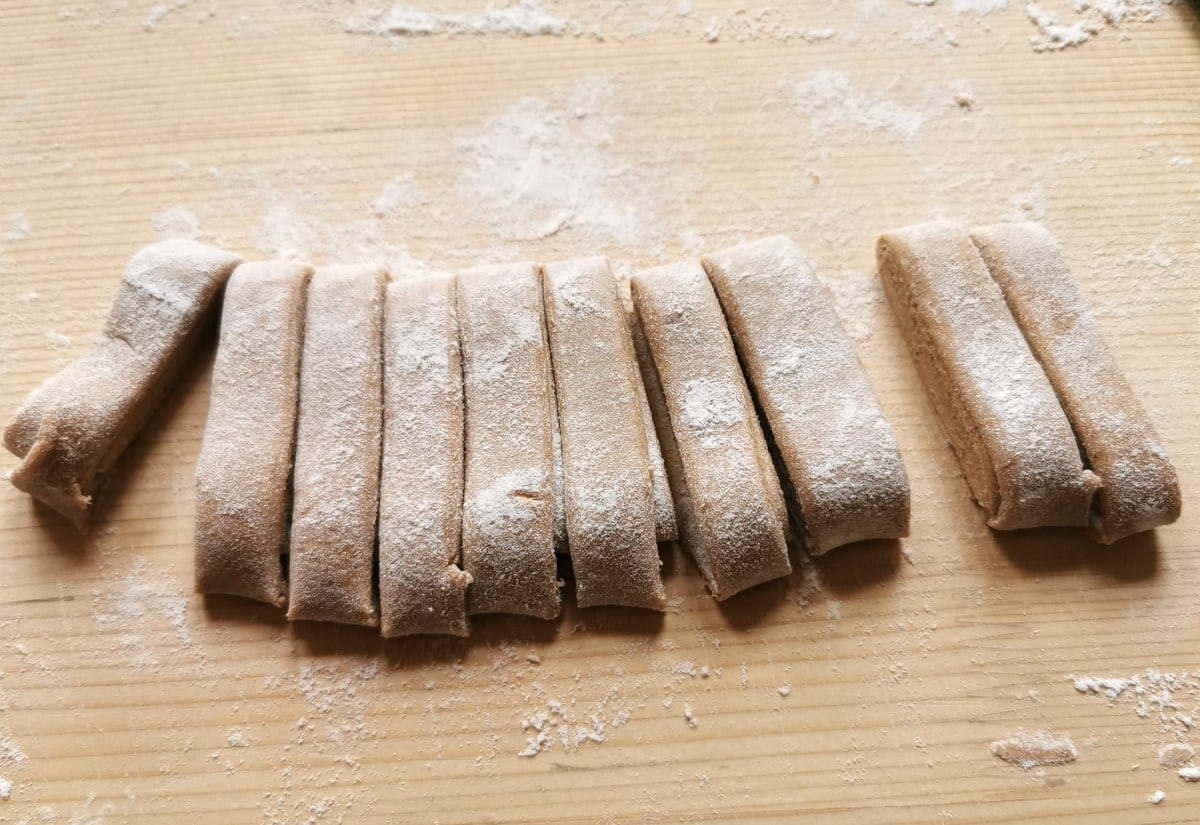
Is chestnut pasta gluten free?
Traditionally, chestnut pasta isn’t gluten free because it’s made with a mix of chestnut and wheat flours. However, you can make this homemade chestnut pasta with any gluten free pasta flour instead of the wheat flour, such as rice flour, or just with chestnut flour, which is gluten free.
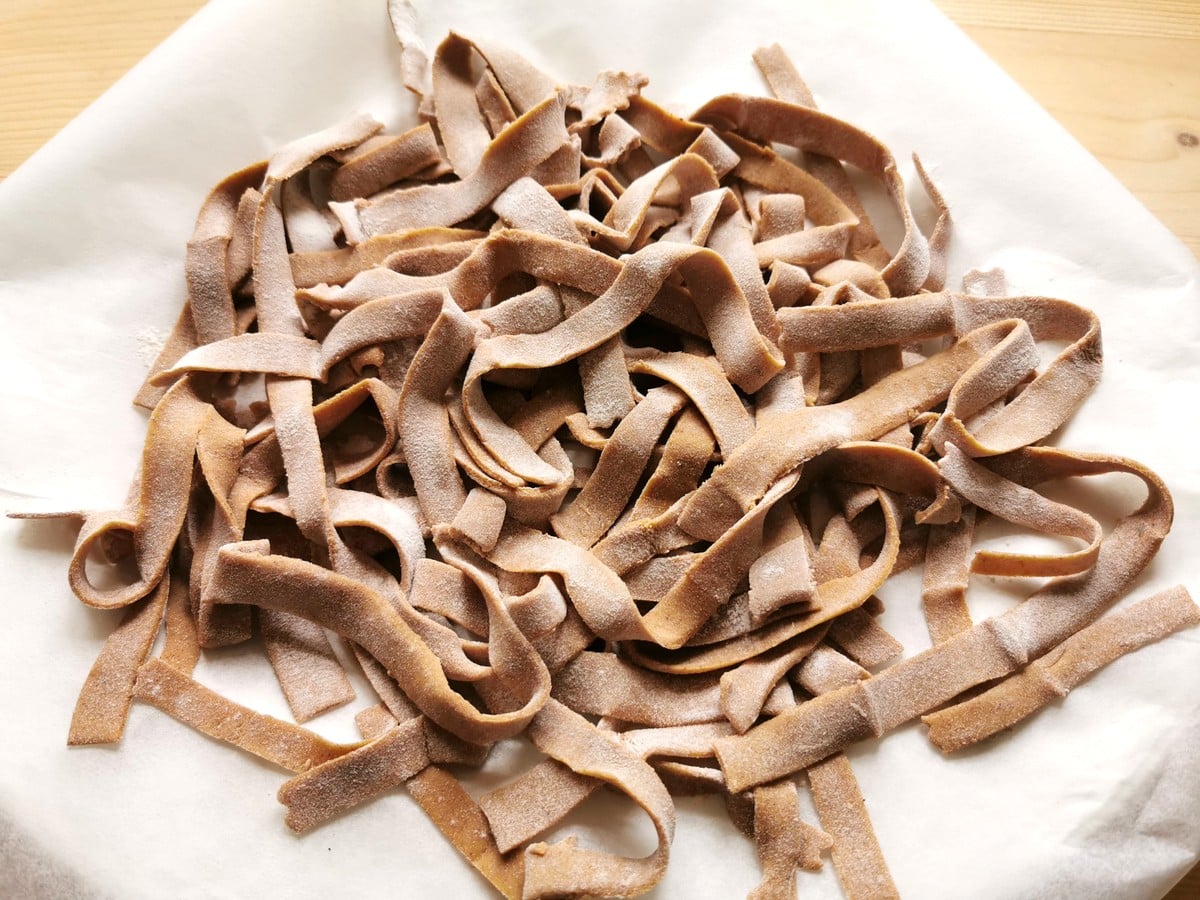
Making this chestnut pasta.
This recipe is traditionally served with tagliatelle or fettucine. Both are types of egg ribbon pasta. Tagliatelle is slightly wider than fettuccine although there’s often little difference between them.
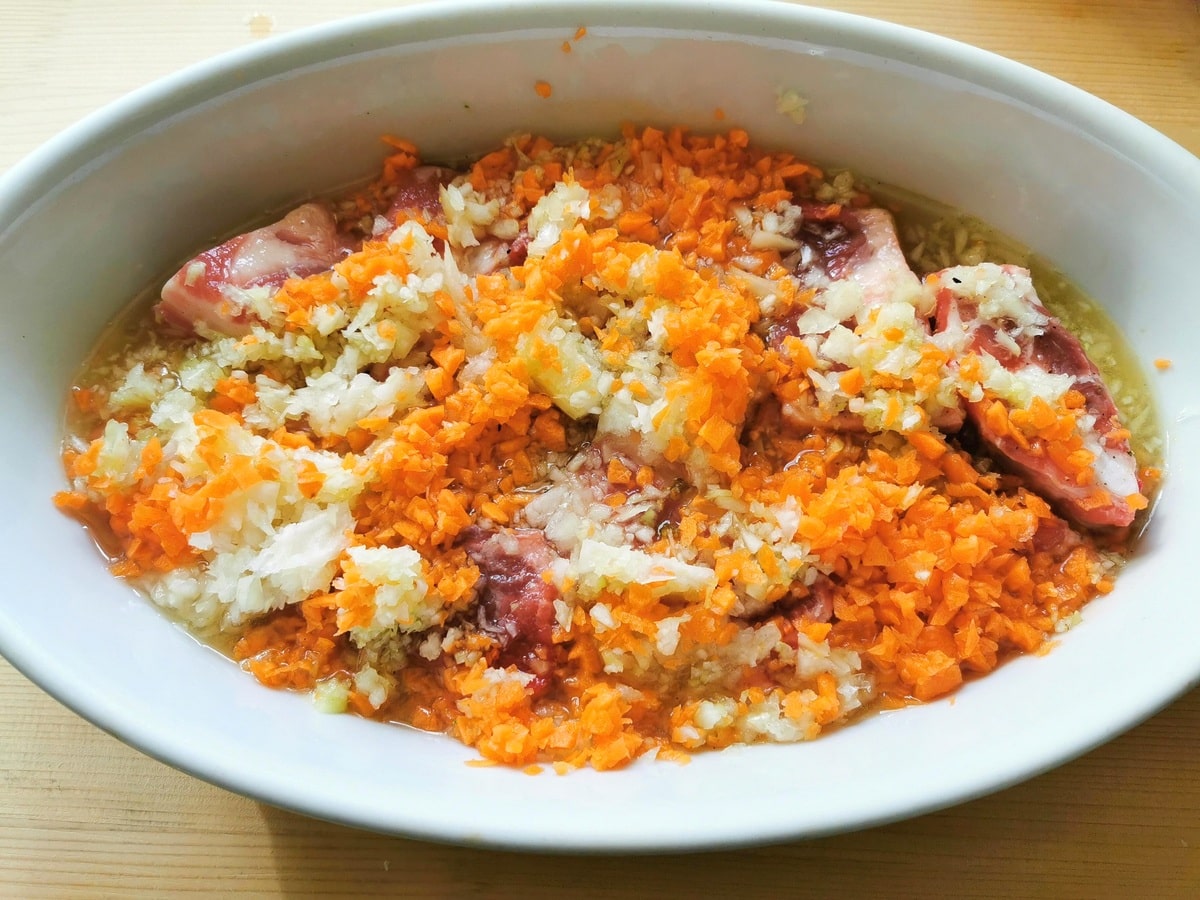
The recipe I followed comes from my favourite Italian cookbook ‘ La Cucina, the Regional Cooking of Italy’. It is published by the Italian Academy of Cuisine (L’Accademia della Cucina Italiana). This recipe calls for fettucine. But, actually, my homemade chestnut pasta is more like tagliatelle.
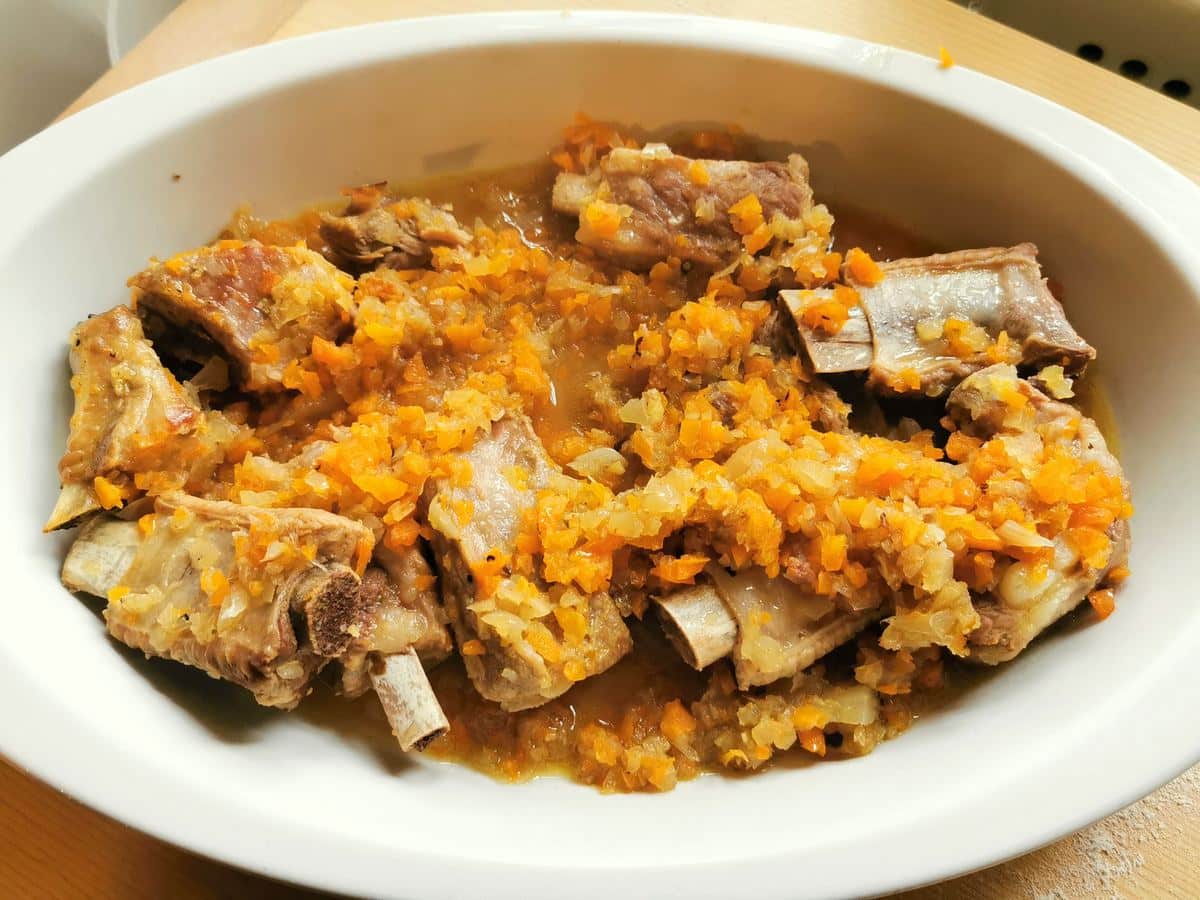
To make the pasta for this chestnut pasta with pork and cabbage recipe you need to make a dough out of the eggs and flours as you would for homemade lasagne sheets. Then, just roll the dough out into rectangular sheets, roll them up and cut into ribbons. You can make them a bit wider like mine or narrower. However, the thinner they are, the faster they’ll cook. So, keep that in mind when boiling them.
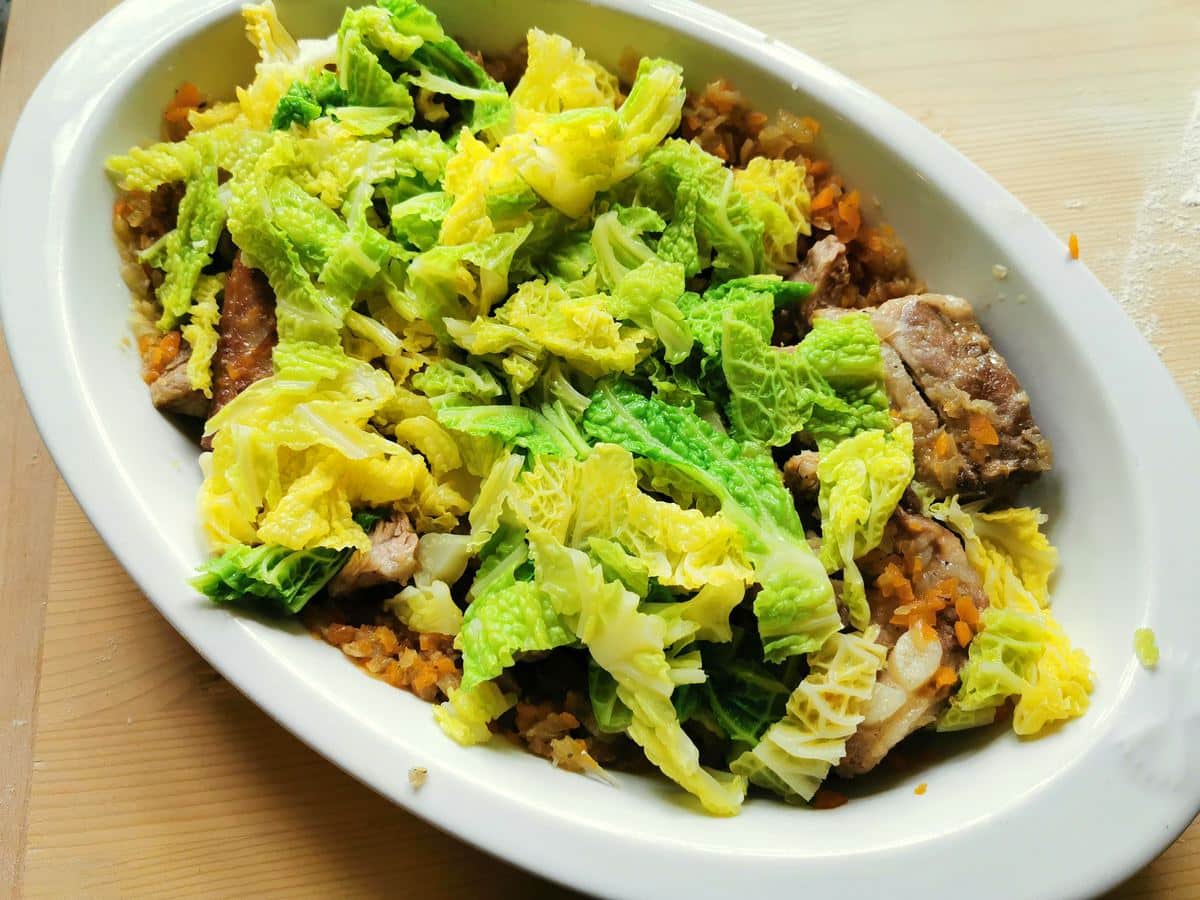
Making the pork and cabbage sauce.
There are varying versions of this typical Val d’Aosta dish. The recipe I followed involved baking the sauce in the oven. I really liked doing it this way as I think it’s healthier than frying everything. The pork ribs, carrots, onion and celery are cooked in the oven with wine and vegetable broth until the pork meat is literally falling off the bone.
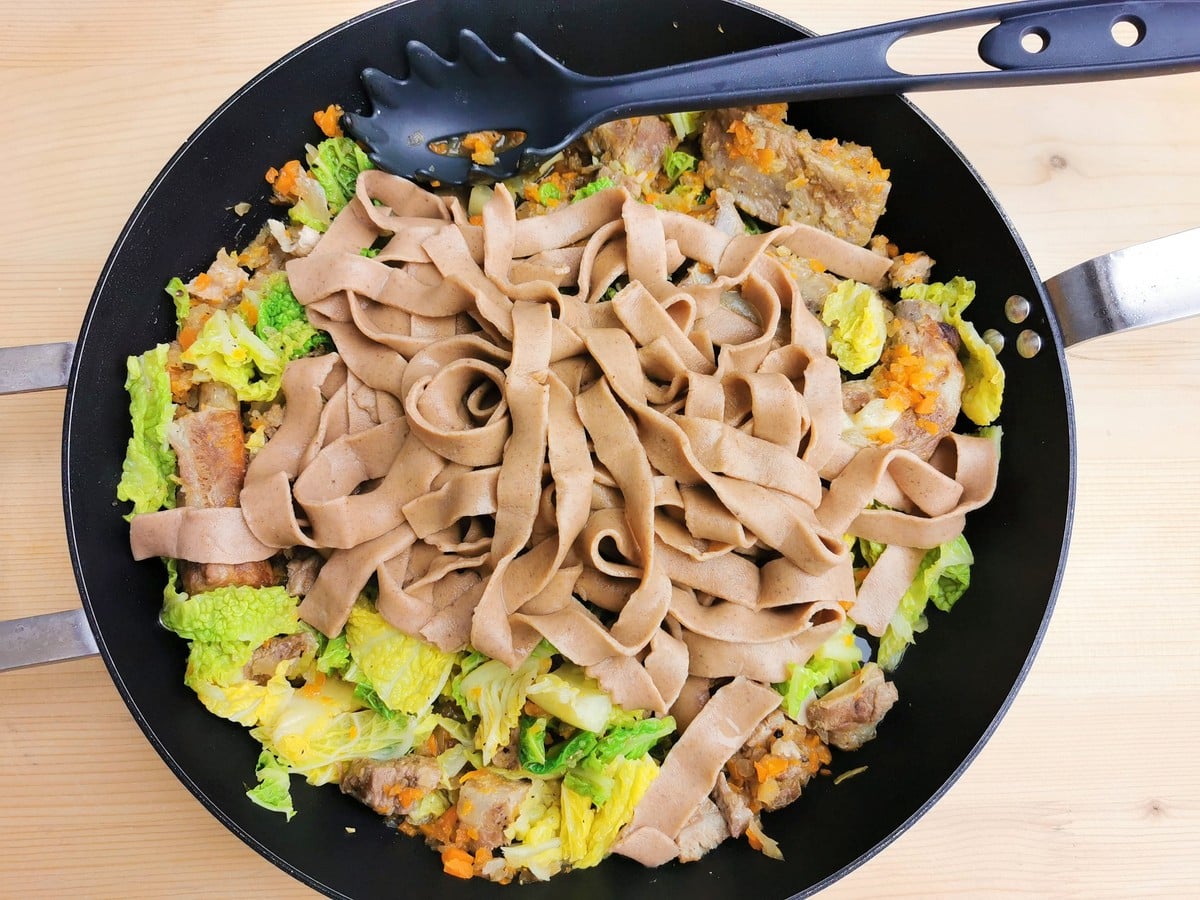
The cabbage needs to be blanched first. Then you chop it and add it to the pork and other veg after removing most the meat from the bones. I kept a few pork ribs intact but that’s a question of choice.
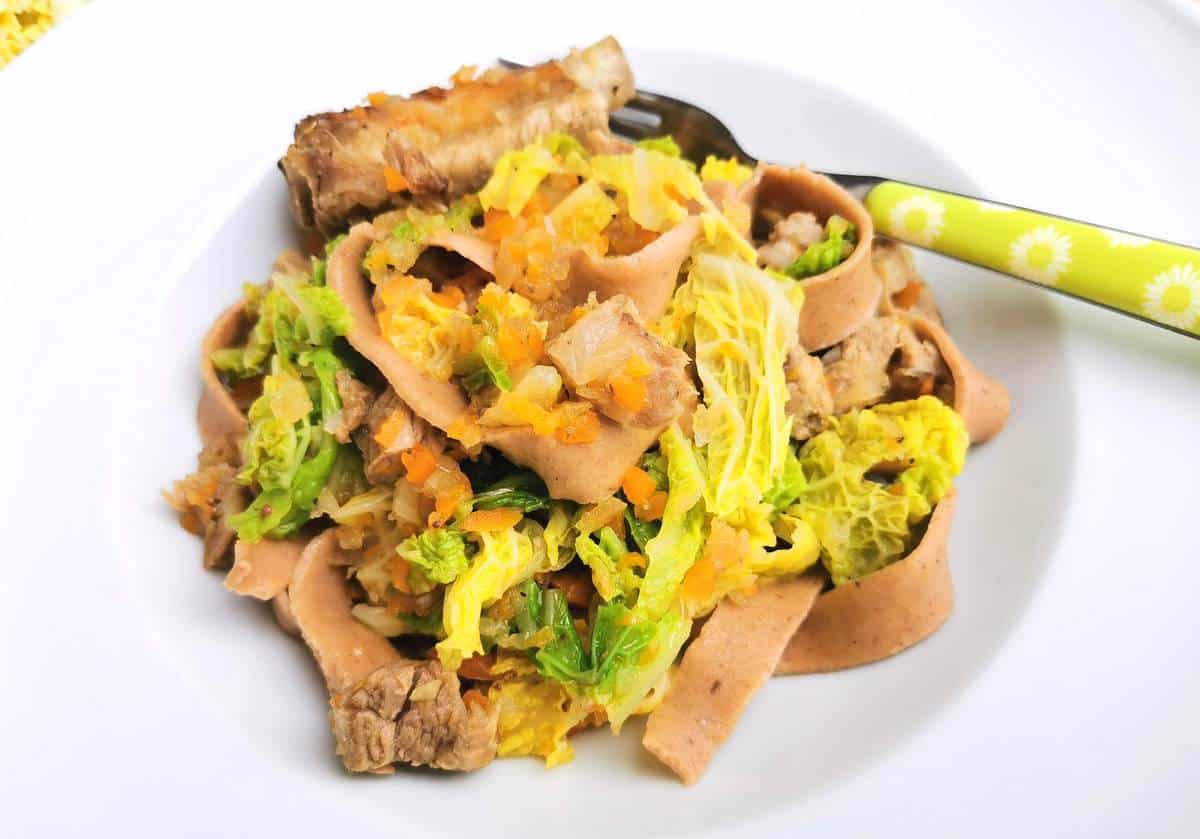
You can also cook the sauce in a skillet or Dutch oven on the stove top. To do this, heat olive oil in a skillet. Add the pork ribs and brown on each side. Then, transfer the ribs to a plate and add the chopped onion, carrot, and celery to the skillet. Cook until they soften slightly. Add the white wine and scrape the pork bits up from the bottom of the pan. Finally pour in the vegetable broth and browned ribs. Cover the skillet and simmer for 1.5 or at least until the pork meat is falling off the bone.
Pin for later!
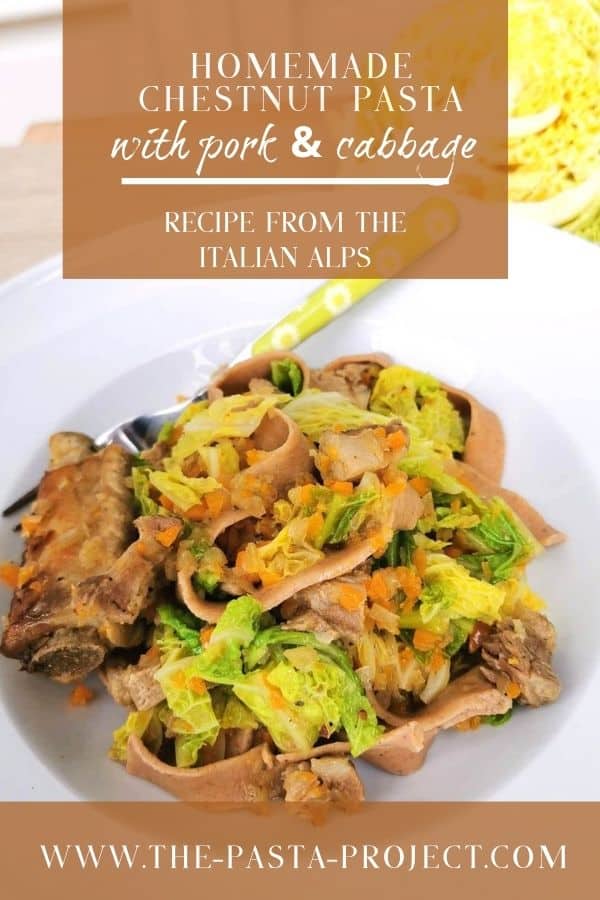
Whichever way you make this sauce, I’m sure you’ll enjoy it. Unlike pasta sauces in the south, many Italian mountain pasta recipes are a combination of pasta and larger pieces of meat and or veg. They are more rustic, chunkier and heartier.
Don't forget to pin for later!
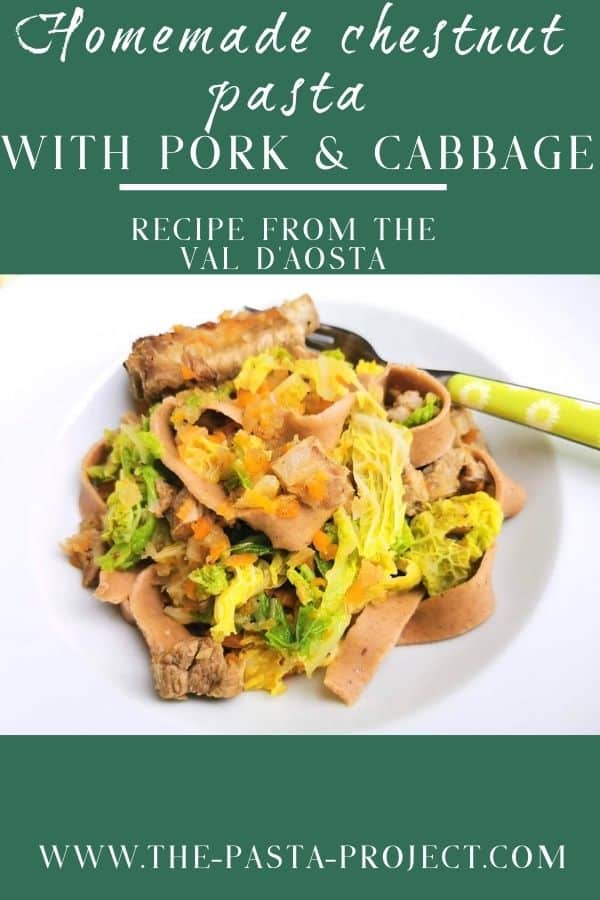
This recipe for pizzoccheri alla Valtellinese from the Alps in Lombardy is similar. The pasta is made from buckwheat and the condiment is potatoes, Savoy cabbage and cheese.
If you make this homemade chestnut pasta recipe, I’d love to hear how it turns out and if you liked it. Please leave a comment here on the blog or on The Pasta Project Facebook page.
Looking forward to hearing from you!
Buon appetito!
Other recipes from Val d'Aosta.
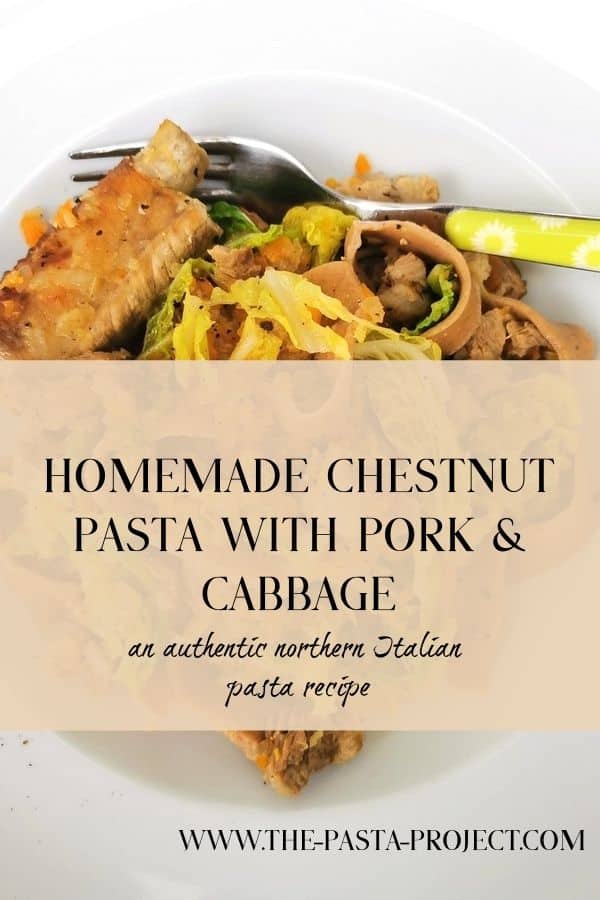
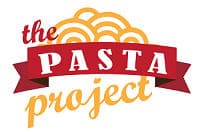

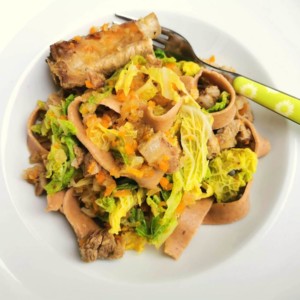

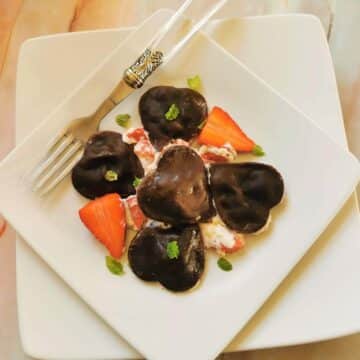
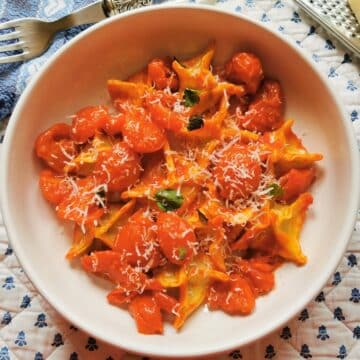
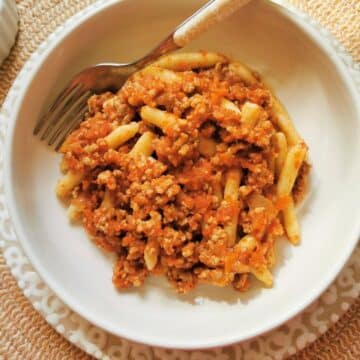
bill hancock says
i dont like it
Lathiya says
Never heard of chestnut pasta. sounds great and this looks delicious.
Connie says
I didn't know chestnuts had vitamin C. Good to know! Love that you made your own pasta. Definitely have to give this a try!
Laura Arteaga says
Never heard of Chestnut flour and now I feel like I've been missing it! Your homemade pasta looks absolutely delicious! Every time I try making pasta it takes me the whole day, this recipe looks simple and perfect. Thank you for sharing! I'll be looking for chestnut flour this week 🙂
Nicoletta De Angelis Nardelli says
Love the nuttiness of chestnut flour so much! Your homemade tagliatelle are beautiful and the pairing with cabbage and pork costine is hearty and delicious.
Gunjan says
I love pasta and want to try this recipe. But I don’t eat pork so what other protein would you recommend in it. Thanks.
Jacqui says
Hi Gunjan, thanks for your comment. I think this recipe would work well with lamb or kid ribs. Beef is also possible but they take longer to cook and may not be as tender.
Ramona says
WOW, the combinations in this recipe just make me drool just by thinking about it! I was struggling with what I should make for dinner and since i have all these ingredients i know what to make!
Paula Montenegro says
I'm excited about making this pasta since I read the title as I love chestnut flour! I only use it to make a pound cake, so this recipe comes at a perfect time. I can't wait. Thanks for sharing.
Tracy says
This is incredible. The chestnut pasta is so so so delicious and so unique. My family loves this recipe so much - thank you!
Ashley says
I've never heard of chestnut pasta, but it sounds delightful!
Flossie | SuperMomHacks says
Oooh this looks so delish! I love the twist of homemade GF pasta. And so seasonally appropriate - just last night I made a cabbage/pork recipe and (separately) a dif recipe with GF edamame pasta - I never thought to add the pasta to the cabbage-pork dish, though, and I bet the chestnut flavor is perfect with the cabbage and pork!
Jenny says
I love discovering new recipes. Your chesnut pasta with pork and cabbage looks delicious and has me intrigued. Love all the ingredients. Pinned it and bookmarked it to make soon. Thanks so much for sharing it with us.
FOODHEAL says
Fresh homemade pasta and they are made with chestnut, wow! This is a real treat. I can imagine the flavors
Nisha says
Chestnut flour pasta sounds amazing .By the color of the dough and pasta it looks so hearty and healthy . The other ingredients seem to be a great combination with it. So interesting to learn about new pastas.
Clara says
I'm always looking for a new recipe to try and this Chestnut pasta definetly fits the bill. Lookign foward to giving this a go.
Luci says
I'm always on the lookout for new pasta recipes! Your Chestnut Pasta looks absolutely delicious and definitely a dish I need to try! It sounds perfect for the fall and winter time!
Sarah James says
Your Chestnut Pasta with Pork and Cabbage looks delicious. I've never tried using chestnut flour before but I love the sound of the sweet nutty flavour it gives to the pasta. Thanks for sharing
Dannii says
What a delicious and hearty looking pasta dish. I can't wait to try it.
Ashley says
The only chestnut "thing" I've had it a chestnut latte from Starbucks! I'm so excited to try this—I've been making pasta for most of quarantine, and have come to love the process! Thanks for sharing this recipe!